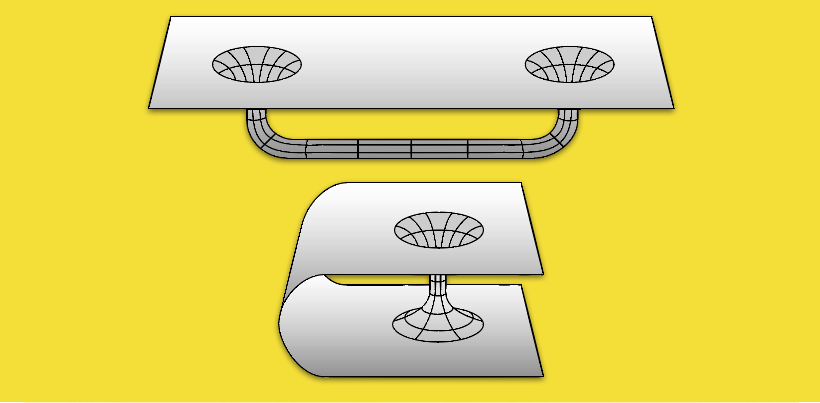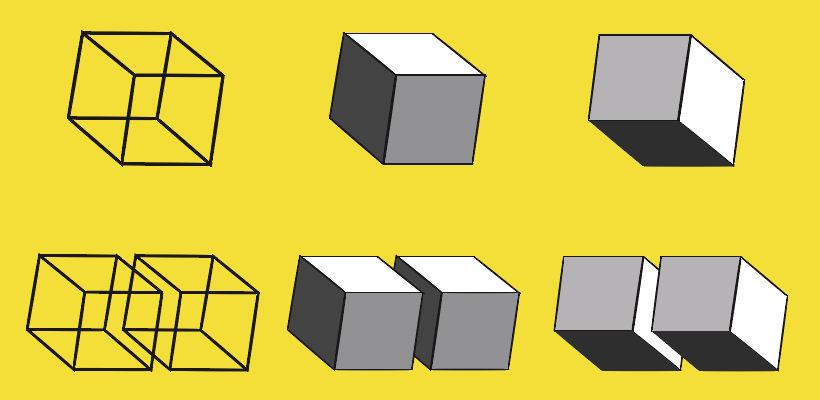This month is the 100th anniversary of Albert Einstein’s November 1915 discovery of the gravitational field equations of General Relativity, in which test masses move along the straightest possible paths (called geodesics) in spacetime curved by the density and flux of energy and momentum (including mass and pressure). General Relativity allows spacetime to be topologically doubly connected. In the “wormhole” depicted below (using two different embeddings), the distance across the flat region may be large even if the distance through the tube is small. Traversable wormholes, like the one in the movie Interstellar, might be propped open by exotic matter of negative energy density and provide shortcuts across the universe. Such structures are sometimes called Einstein-Rosen bridges, after a 1935 paper by Einstein and Nathan Rosen.

A wormhole is a geometry of four-dimensional spacetime in which two regions of the universe are connected by a “shortcut” consisting of two “mouths” connected by a short narrow “throat”.
Also this month, several research teams reported the best yet experimental realizations of quantum entanglement, in which pairs of particles interact so that each particle cannot be described independently regardless of their separation. For example, an electron and positron in the ground state of positronium can annihilate into two oppositely traveling photons whose spins are completely correlated, so that measurement of one spin determines the other even if the measurements are spacelike (or so far apart that no signal could connect them). In the visual metaphor below, a Necker cube outline can be interpreted two ways, representing a photon in a superposition of two spins; similarly, a pair of Necker cubes can be interpreted two ways, representing measurements of its correlated parts. Such “spooky action at a distance” is sometimes called an EPR correlation after another 1935 paper by Einstein, Boris Podolski, and Rosen.

Single ambiguous Necker cube is a metaphor for quantum superposition, while a pair of ambiguous Necker cubes is a metaphor for quantum entanglement.
Recent discussions of the black hole information paradox and the holographic principle in anti-de-Sitter-space model universes suggest a relationship between wormholes and quantum entanglement that may elucidate the nature of spacetime itself: Can Einstein-Rosen bridges explain Einstein-Podolski-Rosen correlations? Is ER = EPR?

Thanks, Mark! I enjoy reading your posts as well.